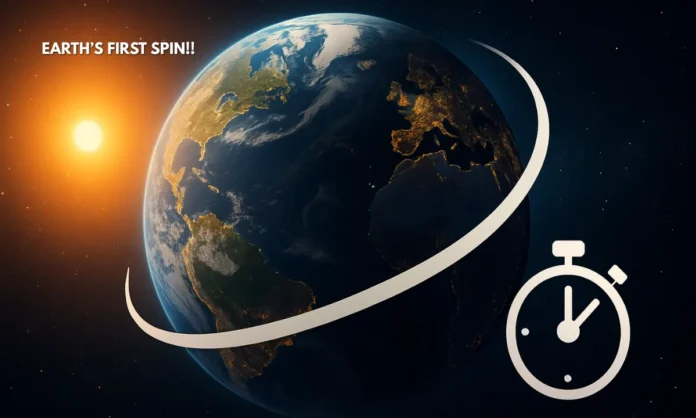Summary
- Earth’s rotation on July 22 will shorten the day by 1.34 milliseconds, making it the second-shortest day of 2025.
- Scientists warn that the accelerating rotation could require a “negative leap second” adjustment by 2029.
- Factors like the Moon’s pull, Earth’s core movements, and atmospheric changes influence this irregular spinning speed.
A Tiny Change with Big Implications
On July 22, the Earth will rotate slightly faster than its normal pace, resulting in a day that is 1.34 milliseconds shorter than the standard 24 hours. Though imperceptible to humans, this anomaly is of major scientific interest. July 10 already recorded the shortest day of 2025 so far, with a reduction of 1.36 milliseconds, and July 22 is expected to be the second-shortest.
The phenomenon is linked to variations in Earth’s core dynamics, ocean currents, and atmospheric shifts. Historically, the Earth’s rotation was much faster—billions of years ago, days lasted around 19 hours due to tidal interactions between Earth, the Moon, and the Sun.
Today may have be the shortest day in recorded history, as Earth rotated 1.36 milliseconds faster than usual starting July 8
— Pop Tingz (@ThePopTingz) July 22, 2025
While negligible, scientists say this rare speed-up could impact GPS, satellites, and global timekeeping systems. pic.twitter.com/OQdNoFXydB
Why Scientists Are Concerned
- Recent data suggests Earth’s rotational speed is showing an unpredictable acceleration.
- If this trend continues, scientists may need to subtract a second from atomic clocks by 2029, a process called a “negative leap second.”
- Such adjustments are rare and can have major implications for global timekeeping systems and satellite navigation.
Scientists have yet to pinpoint the exact reason for this sudden acceleration. While the Moon’s gradual slowing effect on Earth’s spin has been well documented, recent studies suggest internal geophysical processes could be temporarily counteracting that slowdown.
Tracking Earth’s Fastest Days
- July 10, 2025, recorded the shortest day of the year so far (1.36 milliseconds under 24 hours).
- July 22 is projected to be shorter by 1.34 milliseconds, placing it as the second-shortest.
- August 5 is expected to also witness a similar anomaly.
These micro-adjustments in daily rotation are becoming more frequent, prompting scientists to monitor patterns closely. If unchecked, it could lead to new challenges in synchronizing atomic clocks with Earth’s irregular spin.
The Bigger Picture of Timekeeping
The growing possibility of introducing a negative leap second marks a significant change. Unlike positive leap seconds, which add an extra second to adjust for Earth’s slow spin, a negative leap second would require removing a second to keep clocks accurate. This has never been done before and poses technical challenges for systems reliant on precise time measurements, from stock markets to GPS networks.


